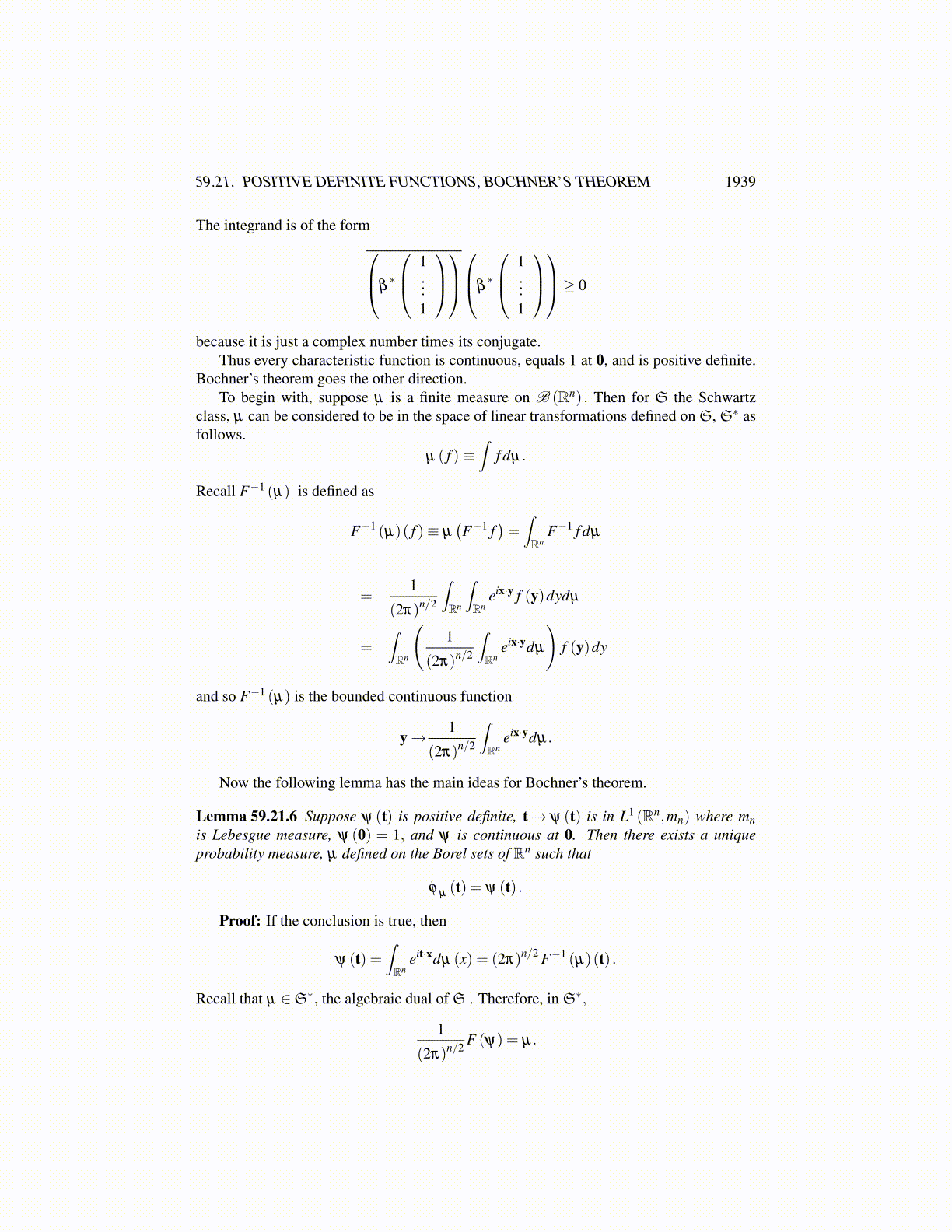
59.21. POSITIVE DEFINITE FUNCTIONS, BOCHNER’S THEOREM 1939
To verify this last claim, note that since α∗Fα is real,
α∗F∗α = α
∗Fα ≥ 0
and so for all α ∈ Cp,α∗ (F∗−F)α = 0
which from Lemma 59.21.1 implies F∗ = F. Hence F is self adjoint and it follows
[α,β ]≡ β∗Fα = β
∗F∗α = αT F∗T β = α∗Fβ = [β ,α].
Therefore, the Cauchy Schwarz inequality holds for [·, ·] and it follows
|[α,β ]|= |(Fα,β )| ≤ (Fα,α)1/2 (Fβ ,β )1/2 .
Letting α = ek and β = e j, it follows Fss ≥ 0 for all s and∣∣Fk j∣∣≤ F1/2
kk F1/2j j
which says nothing more than∣∣ f (t j− tk)∣∣≤ f (0)1/2 f (0)1/2 = f (0) .
This proves the lemma.With this information, here is another useful lemma involving positive definite func-
tions. It is interesting because it looks like the formula which defines what it means for thefunction to be positive definite.
Lemma 59.21.4 Let f be a positive definite function as defined above and let µ be a finiteBorel measure. Then ∫
Rn
∫Rn
f (x−y)dµ (x)dµ (y)≥ 0. (59.21.54)
If µ also has the property that it is symmetric, µ (F) = µ (−F) for all F Borel, then∫Rn
f (x)d (µ ∗µ)(x)≥ 0. (59.21.55)
Proof: By definition if{
t j}p
j=1 ⊆ Rn, and letting α = (1, · · · ,1)T ∈ Rn,
∑j,k
f (t j− tk)≥ 0.
Therefore, integrating over each of the variables,
0≤p
∑j=1
∫Rn
∫Rn
f (t j− t j)dµ (t j)dµ (t j)+ ∑j ̸=k
∫Rn
∫Rn
f (t j− tk)dµ (t j)dµ (tk)
and so0≤ f (0)µ (Rn)2 p+ p(p−1)
∫Rn
∫Rn
f (x−y)dµ (x)dµ (y) .